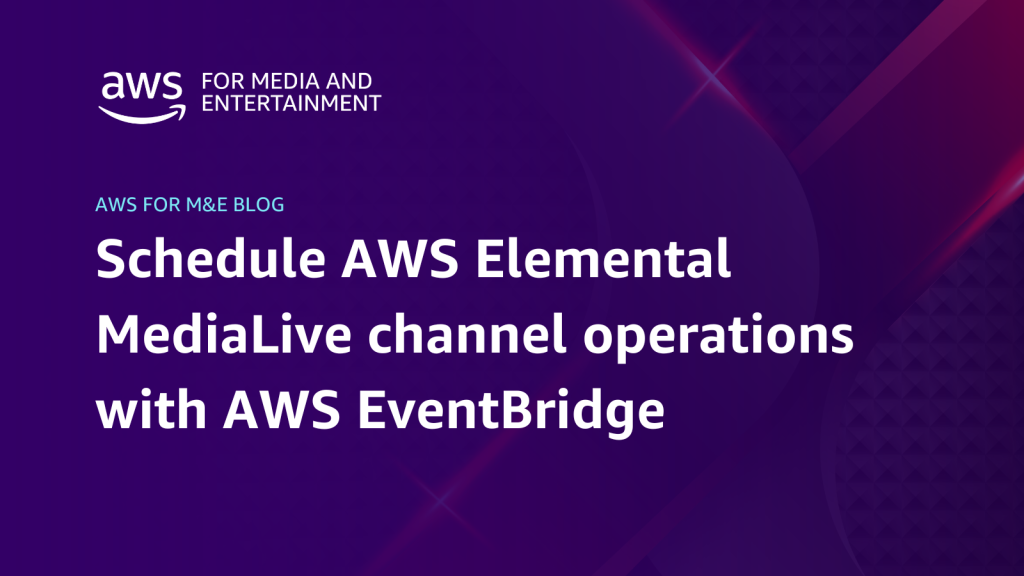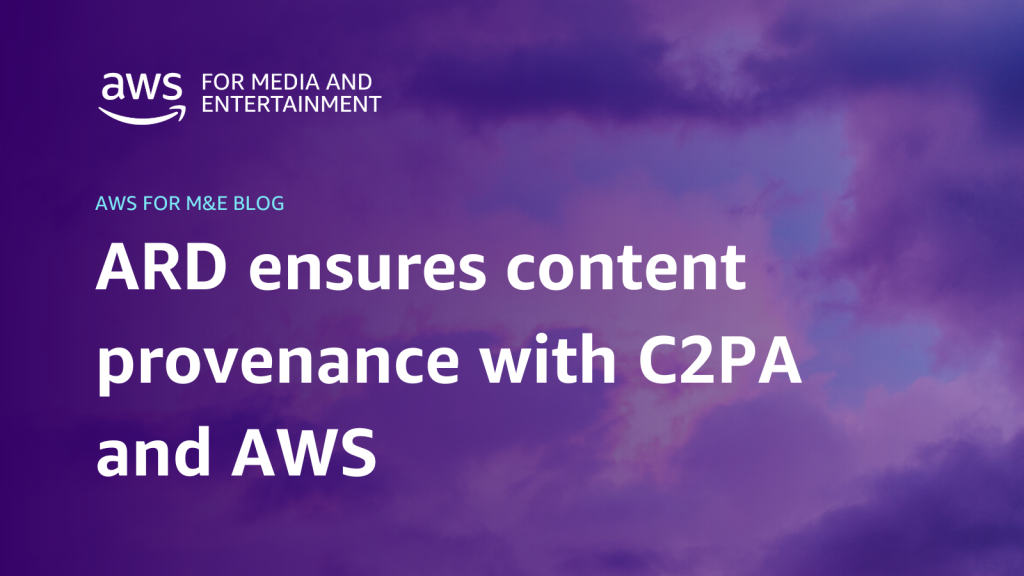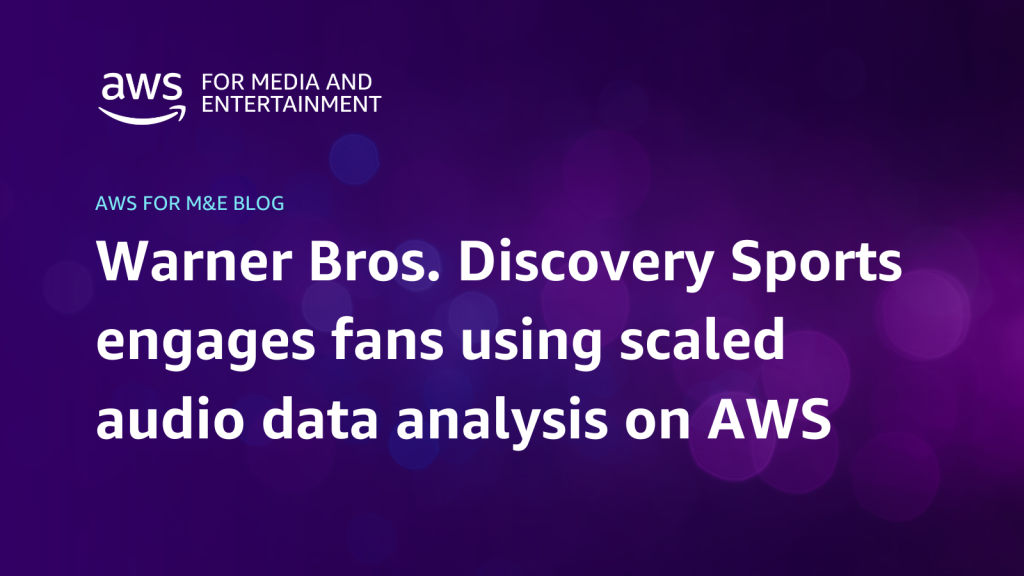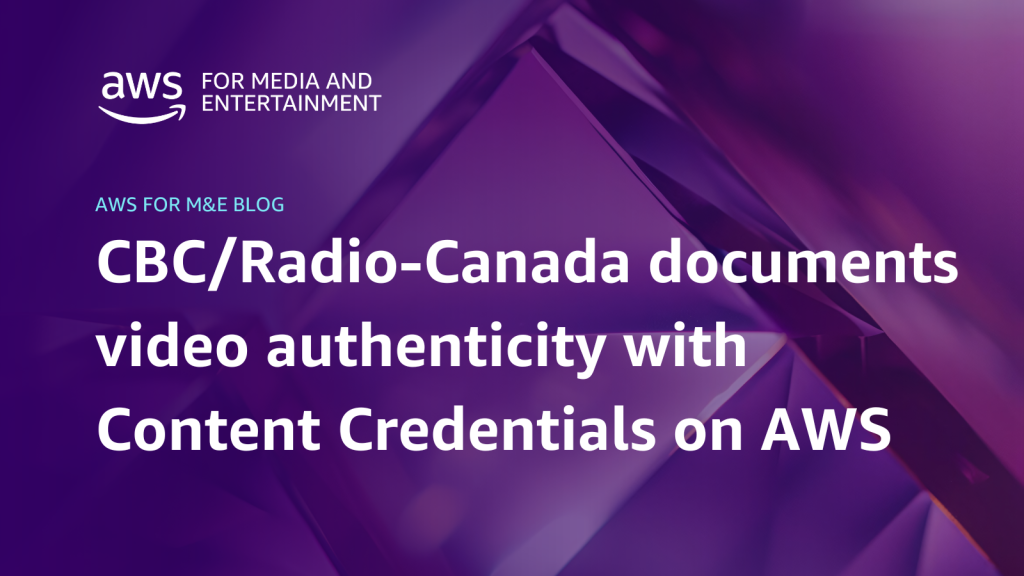AWS for M&E Blog
Category: AWS Lambda
Schedule AWS Elemental MediaLive channel operations with AWS EventBridge
Live streaming helps businesses engage global audiences with low latency. Cloud-based streaming costs less up front than traditional broadcasting and scales to match your needs. By using serverless Amazon Web Services (AWS) services, you can automatically scale resources to match your exact streaming needs, spinning up channels for major events and efficiently cleaning up afterwards. […]
ARD ensures content provenance with C2PA and AWS
This blog post was co-authored by Martin Grohme, Streaming Architect, WDR. The digital age has brought unprecedented challenges in verifying the authenticity of media content. ARD, Germany’s leading public broadcaster, faced a critical challenge: how to guarantee the authenticity of their video content in an era where digital manipulation and misinformation are rampant. The broadcaster […]
Optimizing TV and radio media buying using SmartSpot360 on AWS
This blog post was co-authored by Jhon Valencia (SVP of Technology & Data), Preston Porter (Vice President of Operations), and Claire McCue (Director of Marketing) at BMG360. When you depend on high-volume lead generation, media buying efficiency directly impacts revenue and scalability. However, as campaigns expand across channels, optimizing traditional media (like TV and radio) […]
Warner Bros. Discovery Sports engages fans using scaled audio data analysis on AWS
This blog is co-authored by Steve Cockett, Sports Data Adviser – Tech, at Warner Bros. Discovery and Andrea Fanfani, Principal Product Manager – Tech, at Warner Bros. Discovery. Feed latency and marker accuracy are two critical challenges in live sports broadcasting. Warner Bros. Discovery (Nasdaq: WBD) has developed a solution to tackle both as it […]
Recording mobile video to Amazon S3 using Amazon Kinesis Video Streams
Ensuring you have reliable video capture and storage when one of your recording devices fails or loses connectivity remains a challenge. We will demonstrate how to build a resilient video streaming solution using Amazon Kinesis Video Streams to automatically back up video to Amazon Simple Storage Service (Amazon S3). It will verify footage is not […]
ETS-Wheebox enhances online exam security with Amazon IVS real-time streaming
In today’s connected world, many tasks previously accomplished in-person are now done remotely over the internet, from education and training, to work and medical appointments. Offering a secure platform for online exam administration, education technology provider Educational Testing Service (ETS)-Wheebox supports nearly three million exams each year and is growing fast. With an infrastructure built […]
CBC/Radio-Canada documents video authenticity with Content Credentials on AWS
The CBC/Radio-Canada is Canada’s national public broadcaster, providing a range of programming through its websites, streaming services, podcasts, television and radio. With the rising danger of AI-created deepfakes and the erosion of trust in media, CBC/Radio-Canada needed a way to demonstrate the authenticity of its videos to maintain the confidence of the Canadian public. The […]
Bundesliga Match Fact: Match Momentum – Revealing the game’s invisible pulse
This blog post was co-authored by Luc Eluère, Data Scientist, Sported Solutions AG and Joshua Bär, Product Owner, Sportec Solutions AG. In football, there are moments that define matches—periods when one team seizes control and the momentum shifts decisively in their favor. Picture the relentless attacking waves of Bayern München during their dominant phases, such […]
Guidance for a media lake on AWS: Accelerate media operations with agentic AI
Many media organizations face complexity in their content operations. Teams can spend weeks coordinating asset management, content analysis, and distribution across disconnected systems. Manual handoffs between different teams such as creative, operations, and distribution teams create bottlenecks that delay progress and limit business agility. A media workflow could involve multiple teams and dozens of tools, […]
Cires21 MediaCopilot streamlines video content creation with AWS
This blog post was co-authored by David González, CTO at Cires21 and Nacho Mileo, Head of Product at Cires21. The media and entertainment landscape are experiencing unprecedented transformation. Content creators across industries—from educational institutions to enterprise marketing teams—are demanding sophisticated video processing capabilities that were once exclusive to broadcast professionals. Cires21, with over 15 years […]









